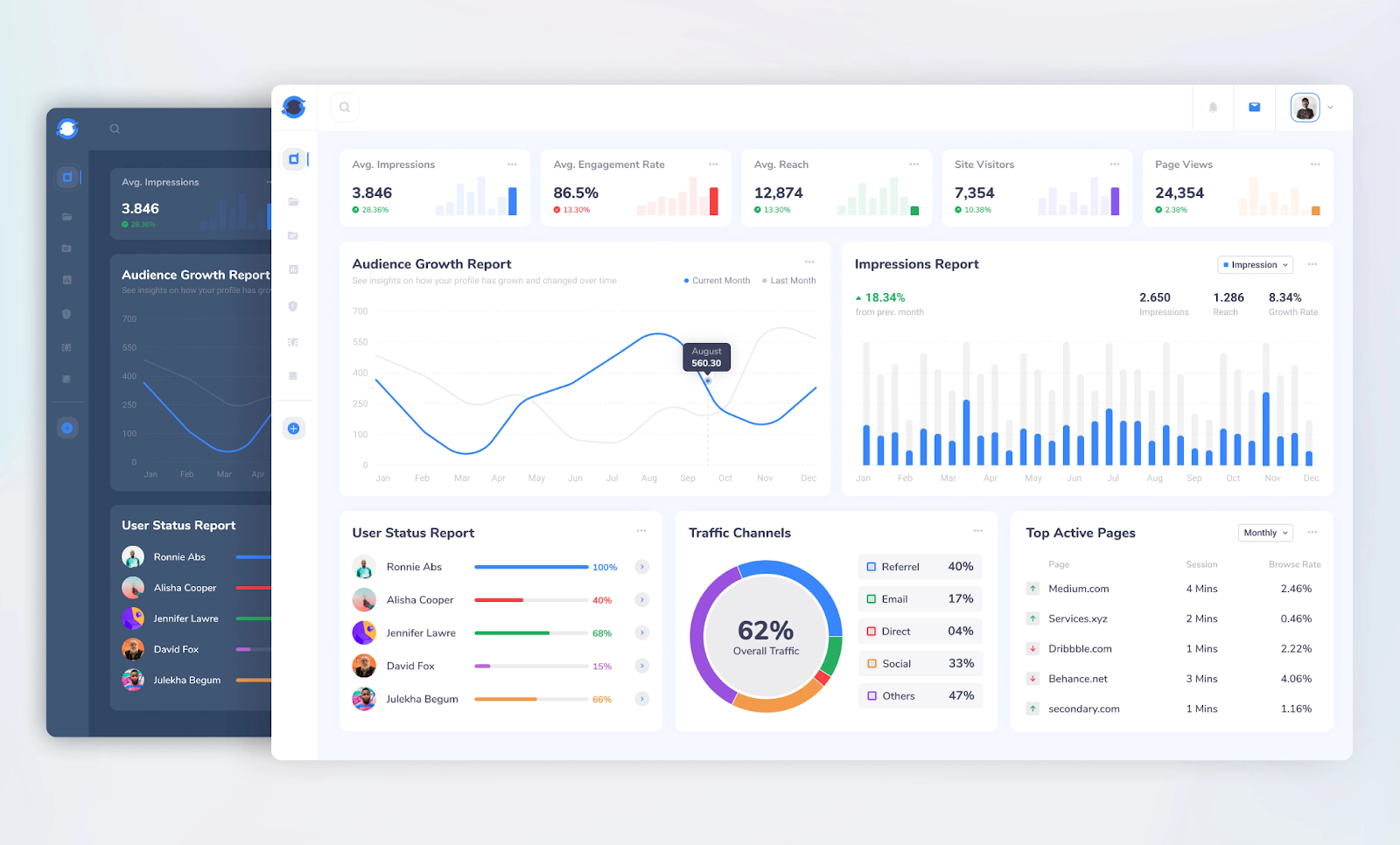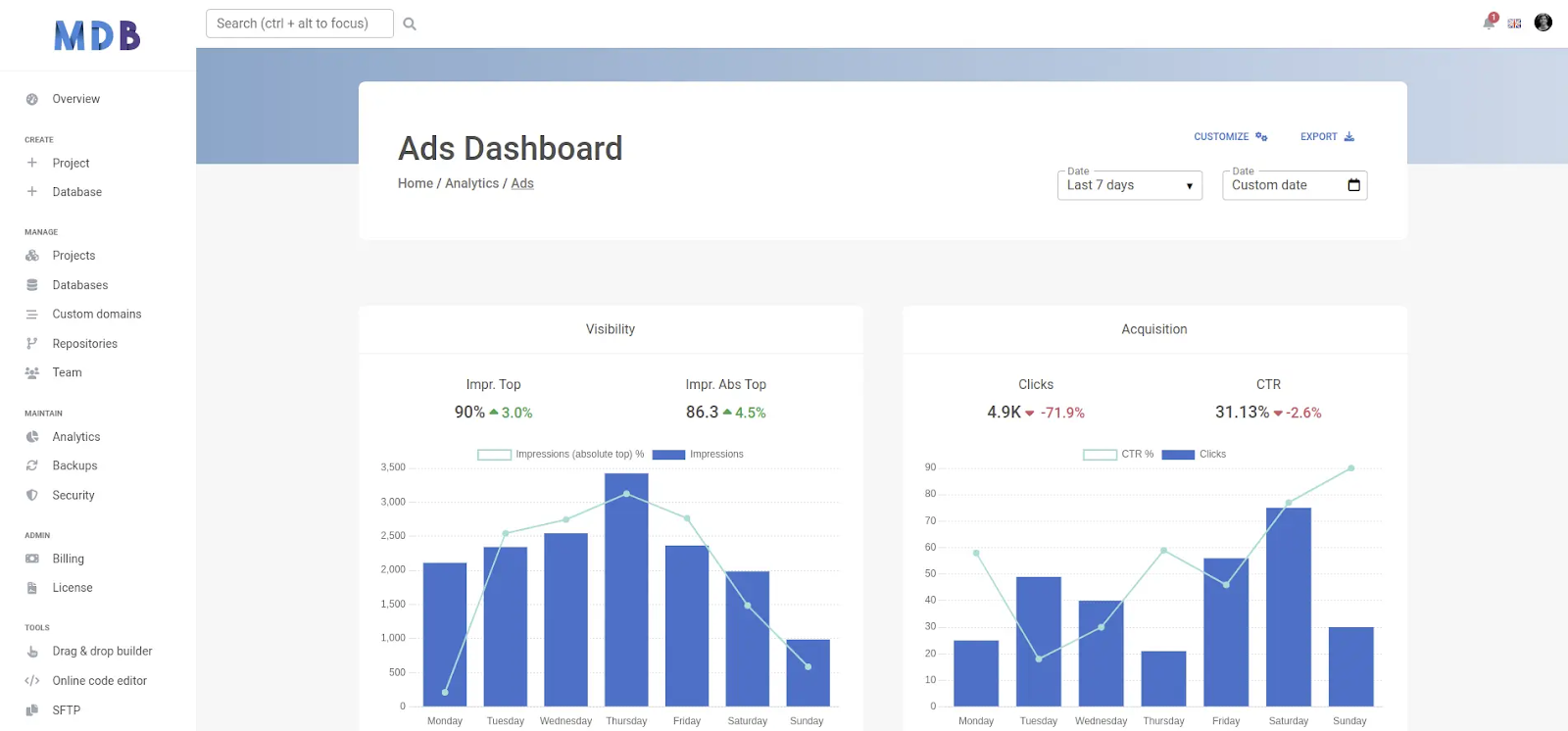
The admin panel plays a crucial part in the complex world of online and application management as the primary tool for managing and supervising numerous operational elements. The article aims to thoroughly examine the fundamental ideas behind admin panels, clarify their underlying purpose, highlight their crucial function in contemporary digital ecosystems, and thoroughly analyze the fundamental functionalities essential to their successful development.
Understanding the Role of Admin Panels
An admin panel, which is often referred to as a dashboard, effectively acts as the main command center inside the structure of a website or application. It provides administrators with a wide range of tools and features that enable effective management across various operational aspects. These elements may include managing user accounts, updating content, configuring system settings, and keeping an eye on important analytics metrics. The panel essentially serves as a link between the user interface and the complex backend architecture, giving administrators the power and ability to coordinate the platform's entire functionality.
The Crucial Role of an Efficient Dashboard
Without a doubt, the panel's effectiveness is crucial for maintaining the smooth operation of websites and applications. A user-friendly and intuitive dashboard speeds up a variety of procedures, from the careful administration of user accounts to the curation and publication of fresh material. By providing streamlined navigation and simple access to crucial and essential data, a well-designed admin panel greatly improves the user experience. And one way to make it is using an admin panel builder. Further, we'll explore some key features to add while creating it.
Essential Functionalities for its Development
To achieve optimum efficiency and user happiness, certain essential features must be incorporated while creating a dashboard:
User Management: In order to be effective, a panel must include comprehensive user management tools that let administrators easily create, edit, and manage user accounts. Additional factors that improve data security include authorization levels and access control measures.
Content Management: The admin panel must make it simple to organize, modify, and update content. This function is essential for sustaining a vibrant and engaging online presence, ensuring that the data is correct and current.
Analytics and Reporting: The dashboard's advanced analytics features enable administrators to learn priceless information from how users engage with the platform. This feature's data-driven approach makes it easier to make informed decisions and improve the platform's overall performance.
System Configuration: An efficient admin panel should include a wide variety of settings, giving administrators the freedom to alter the platform's behavior in accordance with particular needs. These settings could include aesthetic criteria, practical features, or even security procedures.
Notification Center: A notification center, a frequently disregarded but essential feature, gives managers real-time updates and notifications about activities that happen on the platform. These messages may include user registrations, material uploads, and system upgrades, keeping administrators aware so they can react quickly to urgent situations.
Guidelines for Organization and Structure

The organization of these functions also has a significant impact on the user experience, which is why a dashboard's usefulness is not exclusively dependent on the functional features it provides. A well-organized and user-friendly dashboard can be greatly improved by putting these principles into practice:
Hierarchical Categories: Grouping functions into logical categories and subcategories improves the effectiveness of navigation and makes it easier for administrators to find particular features.
Intuitive Dashboard: Administrators should have a quick overview of the platform's performance and key indications thanks to the dashboard's concise presentation of important metrics and data.
Consistent User Interface: Using a uniform design language throughout the panel promotes a clear and unified user experience, reducing confusion and enabling easy navigation.
Efficient Search Functionality: Including a powerful search option gives admins the ability to easily find particular features or content inside the admin panel, thus increasing productivity.
Task Management System: The organizing and tracking of ongoing activities and projects can be facilitated by integrating a task management system within the panel. With the help of this functionality, administrators may efficiently prioritize and keep track of numerous tasks while streamlining workflow management.
Personalization and Adaptation through Customization Options
The ability to accommodate a variety of user preferences and needs through customization choices is a distinguishing feature of a stellar dashboard. Administrators can customize their control interface to perfectly match their workflow and unique preferences by providing options for customized looks, adaptable layout configurations, and even adaptable feature preferences. This degree of adaptability encourages a sense of ownership and flexibility within the management process of the platform.
Optimizing Performance and Speed
A dashboard's effectiveness is crucial to both operational effectiveness and user satisfaction. Utilizing optimization techniques guarantees that the admin panel responds quickly and efficiently:
Efficient Coding Practices: The use of neat and structured coding techniques reduces inefficient code and helps to improve the efficiency of the dashboard as a whole.
Image Optimization: The size of photos can be effectively reduced without sacrificing visual quality using smart image compression algorithms, which speed up page loading times.
Caching Mechanisms: The use of caching methods saves frequently used data, minimizing the need for repetitive data retrieval and so increasing overall speed.
Asynchronous Loading: The admin panel's overall performance and responsiveness are improved by implementing asynchronous loading techniques, which load resources concurrently.
Minimizing External Requests: Loading performance is greatly improved by minimizing external requests, such as those for external scripts or resources. A better user experience is the result of fewer external queries because less time is spent waiting for various components to load.
Conclusion
The admin panel is a pillar of effective digital control in the continually changing world of online and application management. Understanding its importance and putting best practices in place for its design, functionality, and optimization can result in an interface that gives administrators the ability to maneuver the digital world with accuracy and agility. A well-optimized and creatively designed panel becomes an essential instrument for seamless digital governance as technology advances relentlessly. The dashboard continues to be the crucial entry point for guiding the digital ship toward success in a world that is becoming more linked, regardless of whether it is user management, content control, analytics insight, or personalization.
Share this post
Leave a comment
All comments are moderated. Spammy and bot submitted comments are deleted. Please submit the comments that are helpful to others, and we'll approve your comments. A comment that includes outbound link will only be approved if the content is relevant to the topic, and has some value to our readers.

Comments (0)
No comment